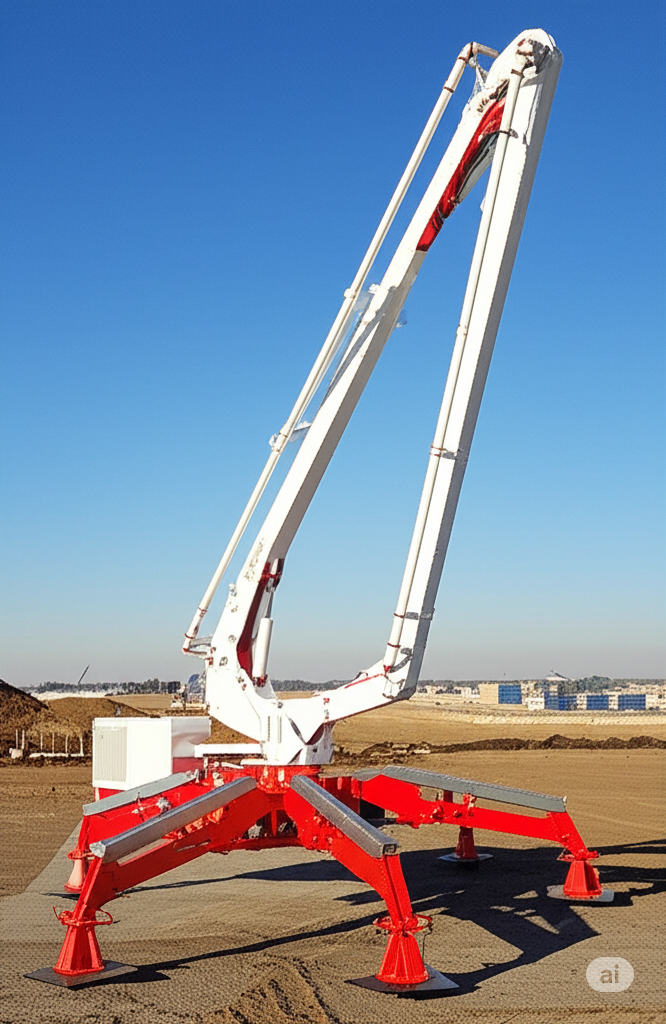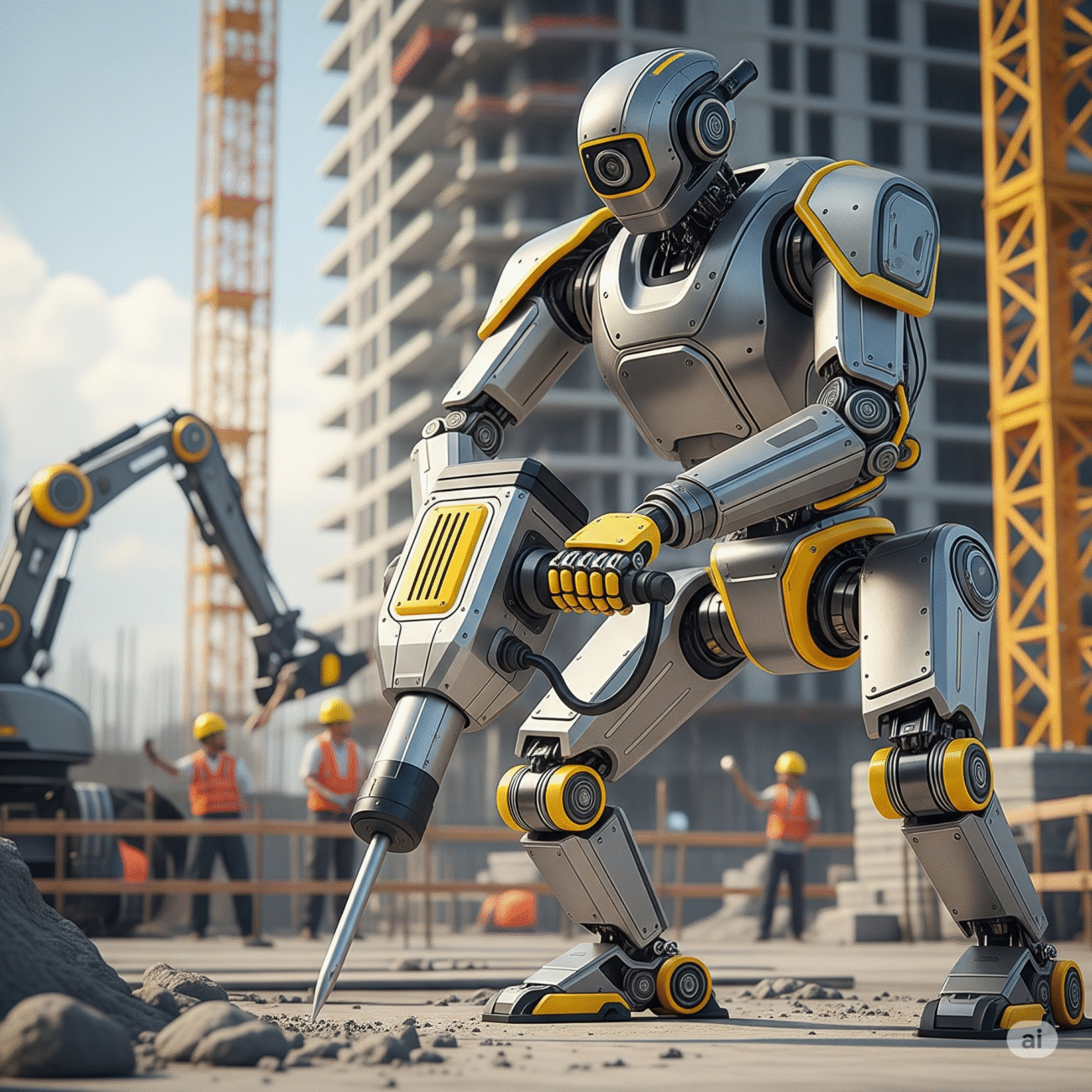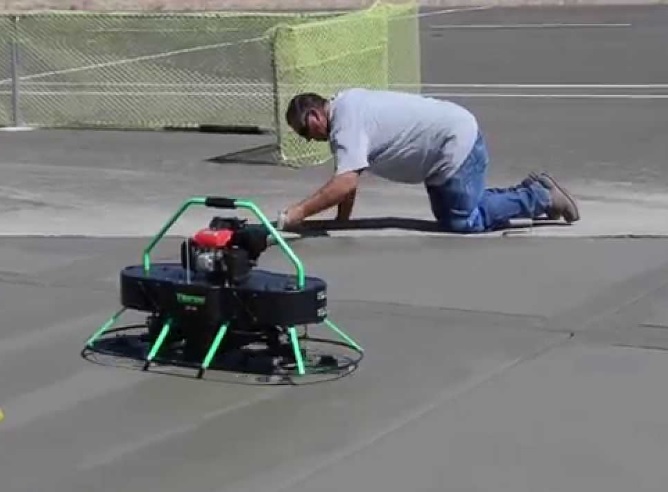Introduction
The construction industry stands at the precipice of a technological revolution, with autonomous concrete construction robots emerging as game-changing solutions for modern infrastructure development. These sophisticated machines have transformed traditional concrete work from labor-intensive, time-consuming processes into precise, efficient, and safer operations that are reshaping how we build our world.
Concrete construction robots represent a convergence of advanced robotics, artificial intelligence, and construction engineering, designed to optimize concrete-related tasks including pouring, leveling, finishing, and surface treatment. These autonomous systems are not merely replacing human labor; they are fundamentally improving workspace safety, enhancing operational efficiency, and reducing material wastage through precise execution of complex tasks.
The Technical Architecture of Concrete Construction Robots
Core Robotic Systems
Modern concrete construction robots employ diverse mechanical configurations tailored to specific applications. The most common architectures include:
- Robotic Arms and Manipulators: Industrial-grade robotic arms, such as the ABB IRB4600 or specialized 7-axis systems, form the backbone of many concrete operations. These systems feature three-degree-of-freedom manipulators with rotational joints using standard engineering-grade slewing bearings, powered by servo motors for precise actuation.
- Mobile Platform Integration: Many robots integrate mobile platforms that can navigate construction sites autonomously. The Floor Master Robot, for instance, achieves up to 100 square meters per hour performance while maintaining automatic laser leveling with 1mm tolerance over 10-20 meters.
- Gantry Systems: Large-scale concrete printing applications often employ gantry-based systems that provide extensive working envelopes for substantial construction projects These systems excel in situations requiring high precision over large areas.
Control Systems and Navigation
The control architecture of concrete construction robots incorporates sophisticated algorithms for trajectory planning and execution. Advanced systems utilize PID-NFTSMC (Proportional-Integral-Derivative with Nonsingular Fast Terminal Sliding Mode Control) integrated with optimization algorithms like the Crested Porcupine Optimizer (CPO) for enhanced performance.
Recent developments show remarkable precision improvements, with modern systems achieving maximum trajectory tracking errors as low as 0.098740 and RMS errors of 0.007405 for primary joints. These control systems enable fast convergence times of just 0.1553 seconds for joint positioning.
Navigation Technology
Concrete robots employ multiple sensor fusion approaches:
- LiDAR Systems: For precise environmental mapping and obstacle detection.
- Inertial Measurement Units (IMUs): For accurate positioning and orientation tracking.
- Vision Systems: Including depth cameras and thermal imaging for real-time monitoring.
- Force/Torque Sensors: For tactile feedback during surface operations.
Applications Across the Construction Spectrum
Concrete Pouring and Placement
Autonomous concrete pouring represents one of the most transformative applications. Modern systems like the concrete pouring construction robot feature tower-based structures with three-degree-of-freedom robotic manipulators capable of precise concrete delivery. These systems utilize modular designs with support, connection, and casting modules that can be flexibly mounted on mobile platforms.
The EquipPro Spider Bot exemplifies advanced concrete placement technology, coupling artificial intelligence with 3D computer vision tools. This system can read formwork patterns and placement depths directly from electronic drawing details, enabling precise concrete placement while reducing residual waste and improving mix consistency.

Surface Finishing and Leveling
Concrete surface finishing has evolved significantly with robotic automation. The SURF ROBO developed by Takenaka Corporation demonstrates finishing capabilities of 300 square meters per hour while providing precision equivalent to skilled plasterers. Modern iterations like the Mark II robot have achieved productivity improvements of approximately 67% compared to manual operations.
Advanced finishing systems incorporate AI-powered floor flattening robots that precisely measure surfaces using 3D scanners and collect geographical information to identify areas requiring treatment. These systems automatically perform concrete plastering without operator intervention when smoothness standards are not met.
3D Concrete Printing
The emergence of 3D concrete printing represents a paradigm shift in construction methodology. These systems utilize continuum robot hoses with variable curvature kinematics, enabling precise material deposition for complex geometries. Advanced printing systems achieve trajectory tracking errors of less than 0.1mm, making them suitable for high-precision architectural applications.
Large-scale 3D printing systems like those developed by XtreeE demonstrate industrial-scale capabilities, producing complex concrete structures with mechanical efficiency and reduced waste. These systems integrate seamlessly with Building Information Modeling (BIM) workflows, enabling direct translation from digital designs to physical structures.
Vibration and Compaction
Concrete vibration robots address the critical need for proper concrete consolidation. Modern systems utilize safe flight corridors and Euclidean signed distance fields for path optimization, reducing runtime by 80% compared to traditional methods while enhancing safety by 50%. These robots can safely navigate around fixed obstacles and moving workers, increasing vibration task execution efficiency by 60%.
Technical Innovations and Advanced Features
Sensor Integration and Real-Time Monitoring
Contemporary concrete robots integrate sophisticated sensor arrays for comprehensive environmental awareness:
- Thermal Monitoring: Systems incorporate FLIR Lepton 3.5 thermal cameras for real-time temperature monitoring, enabling optimal concrete curing control. This technology adjusts layer deposition intervals based on thermal data to ensure proper concrete development.
- Geometric Precision: ORBBEC Astra 2 depth cameras provide real-time geometry monitoring with vision-based edge detection algorithms that adjust robotic arm movements through feedback loops when deviations are detected.
- Pressure Monitoring: Integrated pressure sensors ensure consistent material flow and detect potential blockages before they impact operations.
Artificial Intelligence Integration
Modern concrete robots leverage AI for enhanced operational capabilities:
- Deep Learning Vision Systems: Robots employ convolutional neural networks (CNNs) for scene recognition, achieving accuracy rates of 95.0% for precision identification of construction elements like steel bar arrangement and concrete quality assessment.
- Predictive Analytics: AI systems analyze sensor data to predict maintenance needs, reducing downtime and optimizing equipment utilization.
- Adaptive Control: Machine learning algorithms enable robots to adjust operational parameters based on real-time environmental conditions and material properties.
Safety Systems and Human-Robot Collaboration
Safety remains paramount in concrete robot design. Modern systems incorporate multiple safety layers:
- Collision Detection: Advanced systems utilize Kinect V2 cameras with depth data processing to maintain safe distances from human workers, implementing distance-based speed control and obstacle avoidance.
- Emergency Response: Integrated emergency stop systems with mapp Safety technology provide immediate shutdown capabilities when hazardous conditions are detected.
- Collaborative Workflows: Systems enable safe human-robot collaboration through shared autonomy, allowing human operators to oversee operations while robots handle hazardous tasks.
Real-World Applications
Large-Scale Infrastructure Projects
- Bridge Construction: The FCF (Fast Failsafe Climbing Form) construction method utilizes climbing robot jacks for high-rise concrete structures, achieving significant improvements in safety, construction period reduction, and cost savings. This system has been successfully implemented in 7 construction sites with 12 construction objects.
- Tunnel Construction: Robotic shotcrete systems like the REED C50SS demonstrate high-pressure concrete application capabilities, operating at 2000 psi with 220 horsepower for large-scale tunnel lining projects.
- Commercial Buildings: Projects like the Hope Springs development in Colorado showcase robotic concrete wall construction, where 3D printing systems and robots collaboratively build residential structures.
Efficiency Improvements and Performance Metrics
Real-world implementations demonstrate substantial performance gains:
- Productivity Increases: Robotic concrete paving systems show 20% productivity improvements, with output increasing from 1,672 m²/day to 2,008 m²/day. Steady-state operations demonstrate 7.5% performance gains.
- Resource Utilization: Foreman utilization increases by 56.4% when adopting automated processes, optimizing human resource deployment.
- Quality Consistency: Automated systems provide consistent finishing accuracy and high efficiency while reducing night-shift manpower requirements.
Economic Impact and Market Dynamics
Market Growth and Projections
The concrete construction robot market is currently witnessing remarkable growth, with the global construction robotics sector projected to reach an impressive $3.66 billion by the year 2030. This expansion is anticipated to occur at a compound annual growth rate (CAGR) of 18% from 2025 to a specified future year. In particular, the shotcrete robot segment is expected to see a significant increase, with its market value estimated to rise from $1.2 billion in 2024 to approximately $2.5 billion by 2033, reflecting a CAGR of 9.1%.
When considering regional adoption patterns, the disparities in market penetration become clear. Europe currently leads the way in implementation, with a notable average of 1.2 robots utilized for every 10,000 construction workers. In contrast, the United States shows a lower adoption rate at 0.2 robots per 10,000 construction workers, although there is a recognized potential for significant growth in this area. Meanwhile, emerging markets are poised to drive substantial advancements in the sector, largely fueled by increasing infrastructure development demands. This regional analysis underscores the varying stages of adoption and highlights the opportunities ahead for concrete construction robotics in different parts of the world.
Cost-Benefit Analysis
The implementation of concrete robots in construction offers significant economic advantages that can enhance overall project efficiency and safety. One of the most notable benefits is the direct cost savings achieved through automation. By utilizing robotic systems, projects can experience efficiency boosts of approximately 20%, alongside a remarkable 30% improvement in safety records. For instance, the Floor Master Robot exemplifies this potential by minimizing manual labor requirements while maintaining an impressive performance rate of 100 square meters per hour. Beyond these immediate financial returns, there are also several indirect benefits that contribute to long-term cost efficiencies. Reduced construction timelines lead to quicker project completions, while improved quality consistency ensures that the final outcomes meet higher standards. Additionally, the use of robotic systems significantly decreases liability risks associated with workplace injuries, safeguarding both workers and companies from costly incidents. Collectively, these factors position concrete robots as a valuable investment in the construction industry, promising not only immediate financial returns but also sustainable advantages over time.
Technical Challenges and Solutions
In the realm of construction, concrete robots are designed to operate effectively across a variety of environmental conditions. Their weather resistance is a key feature, with systems engineered to be weatherproof and equipped with environmental monitoring capabilities that ensure performance remains consistent, even when faced with fluctuations in temperature and humidity. These robots are also built to tackle surface variability; for instance, models like the HP SitePrint have the ability to navigate uneven terrains and handle obstacles up to 2cm thick while still achieving high precision in their operations. To adapt to dynamic conditions, these robots utilize advanced path planning algorithms that allow them to respond effectively to changing site circumstances and unforeseen obstacles.
In addition to these adaptive capabilities, innovative material technologies are set to redefine the use of concrete in construction. The integration of smart concrete equipped with sensors enables real-time monitoring of important parameters such as temperature, maturity levels, and overall structural health. This technology functions akin to “Fitbit devices” for concrete, facilitating continuous observation of a structure’s performance and ensuring its durability. Furthermore, there is an increasing trend toward using sustainable materials; robotic systems are beginning to work with recycled and eco-friendly concrete mixtures, enhancing material efficiency and minimizing environmental impact.
Looking ahead, the evolution of collaborative robotics is poised to significantly transform construction processes. Future advancements are likely to include multi-robot systems that function together in swarms, allowing for the coordination of complex construction tasks. Research indicates that such systems could accomplish the construction of a 1.86-meter concrete structure in merely eight minutes through synchronized 3D printing techniques. Moreover, the development of human-robot teaming is on the horizon, aiming to create advanced collaborative systems that seamlessly integrate human expertise with robotic precision. This approach promises to maximize the distinctive advantages offered by both humans and machines, ultimately leading to more efficient and effective construction practices.
Conclusion
Concrete construction robots represent a transformative force in modern infrastructure development, offering unprecedented combinations of precision, efficiency, and safety. These autonomous systems have evolved from simple automated tools to sophisticated, AI-driven platforms capable of complex decision-making and adaptive operations. The technical sophistication of modern concrete robots, incorporating advanced control systems, comprehensive sensor arrays, and intelligent algorithms, enables them to perform tasks that were previously impossible or extremely dangerous for human workers. From precise 3D printing of complex architectural elements to autonomous surface finishing across vast areas, these systems are redefining construction possibilities.
As the technology continues to mature, we can expect even greater integration with digital construction workflows, enhanced AI capabilities, and expanded applications across the construction spectrum. The convergence of robotics, AI, and construction engineering promises to create more sustainable, efficient, and safer building practices that will shape the infrastructure of tomorrow. The concrete construction robot revolution is not just about replacing human labor, it’s about augmenting human capabilities, improving construction quality, and enabling the creation of structures that were previously impossible to build. As these systems become more affordable and accessible, they will play an increasingly vital role in addressing global infrastructure challenges and creating the built environment of the future.
Reference
- 3D Printing of Concrete with a Continuum Robot Hose Using Variable Curvature Kinematics. (2022, May 23). IEEE Conference Publication | IEEE Xplore. https://ieeexplore.ieee.org/document/9812123/
- Bryson, L. S., Maynard, C., Castro-Lacouture, D., & Williams, R. L., II. (2005). Fully autonomous robot for paving operations. Construction Research Congress 2022. https://doi.org/10.1061/40754(183)37
- Fan, S., Li, W., & Xie, R. (2025). Self-tuning trajectory tracking control for concrete pouring construction robots based on PID-NFTSMC and CPO algorithm. PLoS ONE, 20(5), e0324550. https://doi.org/10.1371/journal.pone.0324550
- HAL Robotics. (2024, June 25). 3D concrete Printing: XTrEEE | HAL Robotics. https://hal-robotics.com/use-cases/xtreee-large-scale-3d-concrete-printing/
- Hieu, N. T. T., Trieu, N. M., Dung, D. T., & Thinh, N. T. (2025). Advanced Sliding Mode Control Strategy for High-Performance 3D Concrete Printing. Automation, 6(2), 22. https://doi.org/10.3390/automation6020022
- How robots are used in concrete construction – Standard Bots. (n.d.). https://standardbots.com/blog/concrete-robot
- Kajzr, D., Myslivec, T., & Cernohorsky, J. (2023). An open PLC-Based robot control system for 3D concrete printing. Robotics, 12(4), 96. https://doi.org/10.3390/robotics12040096
- Kajzr, D., Myslivec, T., & Černohorský, J. (2024). Modelling, analysis and comparison of robot energy consumption for Three-Dimensional Concrete Printing Technology. Robotics, 13(5), 78. https://doi.org/10.3390/robotics13050078
- Li, L., Kong, L., Liu, C., Wang, H., Wang, M., Pan, D., Tan, J., Yan, W., & Sun, Y. (2025). Efficient path planning for collision avoidance of construction vibration robots based on euclidean signed distance field and vector safety flight corridors. Sensors, 25(6), 1765. https://doi.org/10.3390/s25061765
- Modeling Basic Aspects of Cyber-Physical Systems, Part II (Extended Abstract). (2014, August 1). IEEE Conference Publication | IEEE Xplore. https://ieeexplore.ieee.org/document/7056797/
- Nevliudov, I., Yevsieiev, V., Maksymova, S., & Chala, O. (2025). A Small-Sized robot prototype development using 3D printing. Acta Mechanica Et Automatica, 19(1), 77–81. https://doi.org/10.2478/ama-2025-0010
- Ortner, M., Reichenbach, S., Braun, M., Pantscharowitsch, M., & Kromoser, B. (2024). Influence of different drilling forces on drill bit wear in automated drilling of concrete with industrial robots. Civil Engineering Design. https://doi.org/10.1002/cend.202400016
- Wikipedia contributors. (2025, April 10). Concrete pump. Wikipedia. https://en.wikipedia.org/wiki/Concrete_pump


